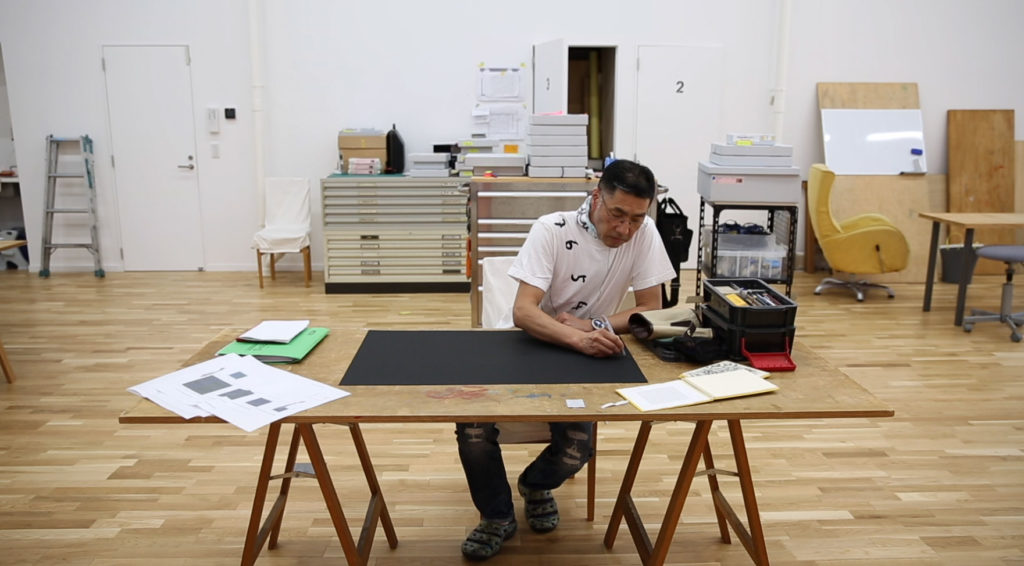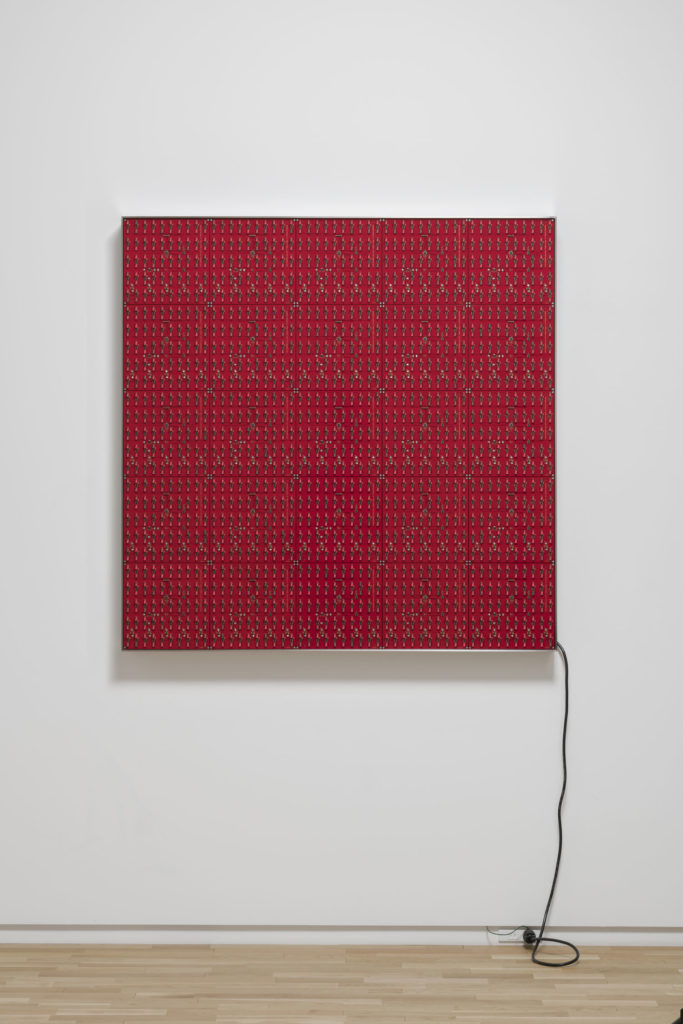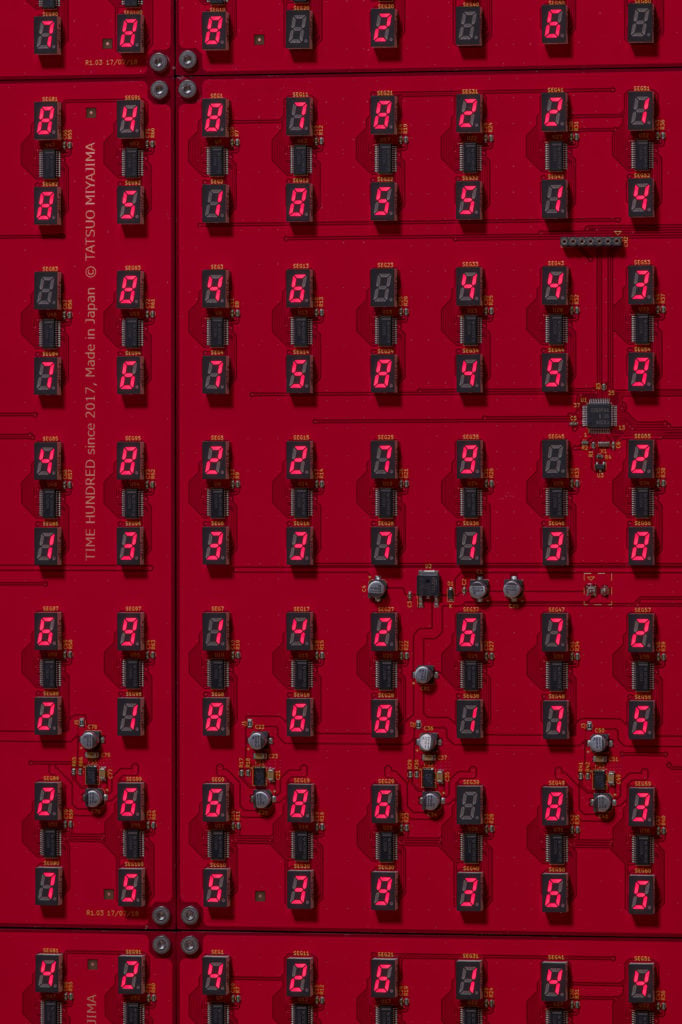On View
Watch Japanese Artist Tatsuo Miyajima Explain the Spiritual Significance of His LED Art
At Lisson Gallery, the Lotus Sutra lives on in light.

At Lisson Gallery, the Lotus Sutra lives on in light.

Taylor Dafoe

Technology-driven installation art may seem like a strange medium through which to explore Buddhist philosophy, but the work of Tatsuo Miyajima does just that. And it’s profound.
Miyajima’s new exhibition—his first solo outing in New York—entitled “Innumerable Life / Buddha,” opens this week at Lisson Gallery. The show debuts five new installations by the Japanese artist, all constructed from intricate networks of red LED lights. Each individual LED displays a number that successively counts down from nine to one.
These five works were inspired by a legend from the Lotus Sutra—a text on which many sects of Buddhism are based. In it, the Gautama Siddhartha is asked who among his Ten Great Disciples will spread his word after he’s passed away. Rather than choose one, the Siddhartha gestures to thousands of Buddhas arising from the earth. The power of Buddhism, he suggests, belongs to everyone equally; yet the collective whole is stronger than any one of its constituent parts.
Miyajima’s installations operate similarly. On its own, a single LED is small; it produces little light. When combined with hundreds—or even thousands, as the artist has done for previous projects—the effect can be powerful.

Tatsuo Miyajima, Innumerable Life/Buddha MMD-01, (2018). © Tatsuo Miyajima. Courtesy of Lisson Gallery.
“I started out as an artist by learning oil painting. But oil painting has no great history in Japan, and I felt it was a very old-fashioned medium with which to make my way in the world,” Miyajima explains in a video produced by Lisson for the show, a helpful resource for those unfamiliar with his work. “Performance art matched my mode of expression perfectly, but it’s a one-off event that ends there. Hence, because I wanted people to participate in or see the media that I create, I ended up producing these kinds of works, where the objects do the performing.”
In the video, Miyajima breaks down his works, and talks about the decisions that led to their making. The LEDs take on the role of performer. The numbers bring a sense of neutrality, he says, which “conjures up imagination in the hearts of the audience.”

Tatsuo Miyajima, Innumerable Life/Buddha CCIƆƆ-01 (2018). © Tatsuo Miyajima. Courtesy of Lisson Gallery
And why the prevalence of the color red?
“The reason I chose red was that I wanted in a way to express energy, the energy of human life, the energy of Buddha…,” says the artist. “Buddhism seeks to discover potential within all people, and that is symbolized by the word ‘Buddha.’ Buddha is not a type of person, it is rather a reference to human potential. The purpose of my art is to open up this potential.”
“Innumerable Life / Buddha” opens January 11, and will be on view through February 16, 2019 at Lisson Gallery’s New York space.